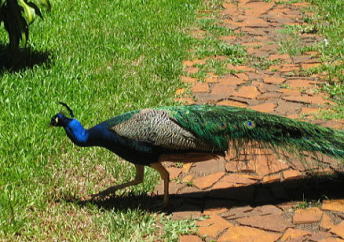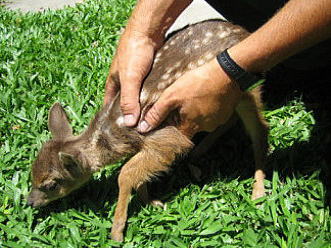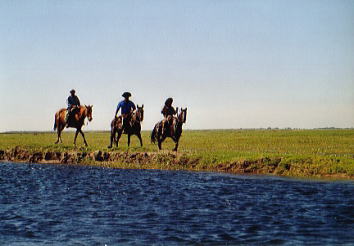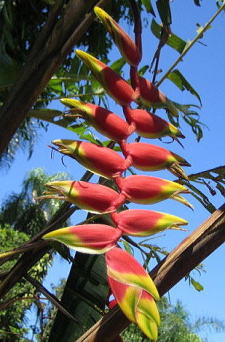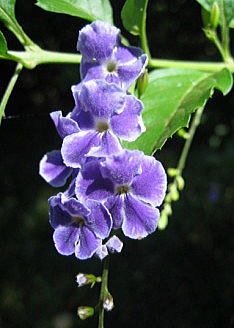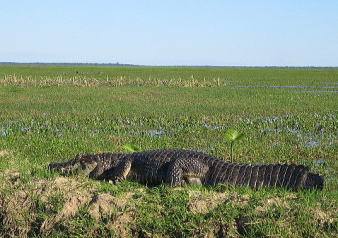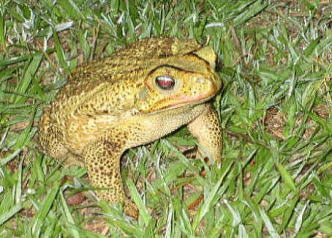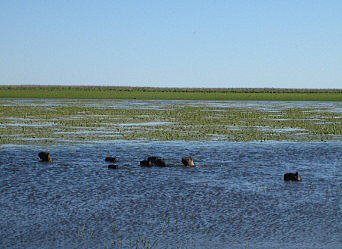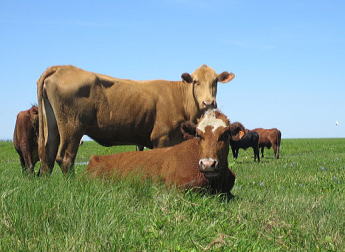Last but not least, here is the pet frog of Prince Augusto. Come the night
fall, he crawls out of his bed (a plant pot) to feast on the insects attracted
by the light. But the way he eats, my God, he eats and eats those chunky
crunchy bugs all through the night.
He does this all summer, and winters in the pot. Thus he has been a resident
frog at La Pelada for many years and more to come.
- Back
And the Lord of the river, Yacare.
On a sunny morning they were often spotted sunbathing on the bank. Sneaking
up, we could often come within a few yards without waking them up.
They are about 2meters in length. Their main diet is fish and, unlike their
African cousins, do not normally attack humans. That said, the sight of
Yacare swimming away, swinging their scaly tails like a big snake, is sure
to make you think twice about wading.
Talking of swimming, these cuddly Capybaras do swim well. Also called water
hog, they are the biggest of the mouse families.
Once we had a near-miss with a Capybara, which dived into the water just
as our boat was speeding by. Missing our boat so very close, he made a
big splash right into our faces. It took a wind out of us, he sure was
hell of a big mouse.
A sinfully cute baby marsh deer.
Sadly they have been hunted down and the remaining population is very small.
Being shy animal you normally do not see them during the day. This bambi
was wandering alone, missed her mother as she was found by a Caucho, who
now hand breeds her in the hope of turning her back into wild.
Even in such a big land, cows are surprisingly well kept and counted down
to the last one. That is the feat of Gaucho, Argentinean cowboys. Throwing
ropes from a horseback, they lead and chase the herds of thousand cows
to rotate in the meadow's separated quarters every two weeks.
And how do they cross the rivers you ask? Well they simply jump in and
swim!! Leading those cows alongside, and still equestrian, they cross the
rivers paddling with hands.
One of the very few countries in the world that achieve nearly 100% subsistence.
The size and the fertility of the land is amazing.
80% of the food exported is beef, which makes cow the unchallenged national
animal of Argentina.
Even today the wealth of the landowners in countryside is measured by the
number of cows in possession. Wholesale price of a grown-up cow is said
to be around US$300.
